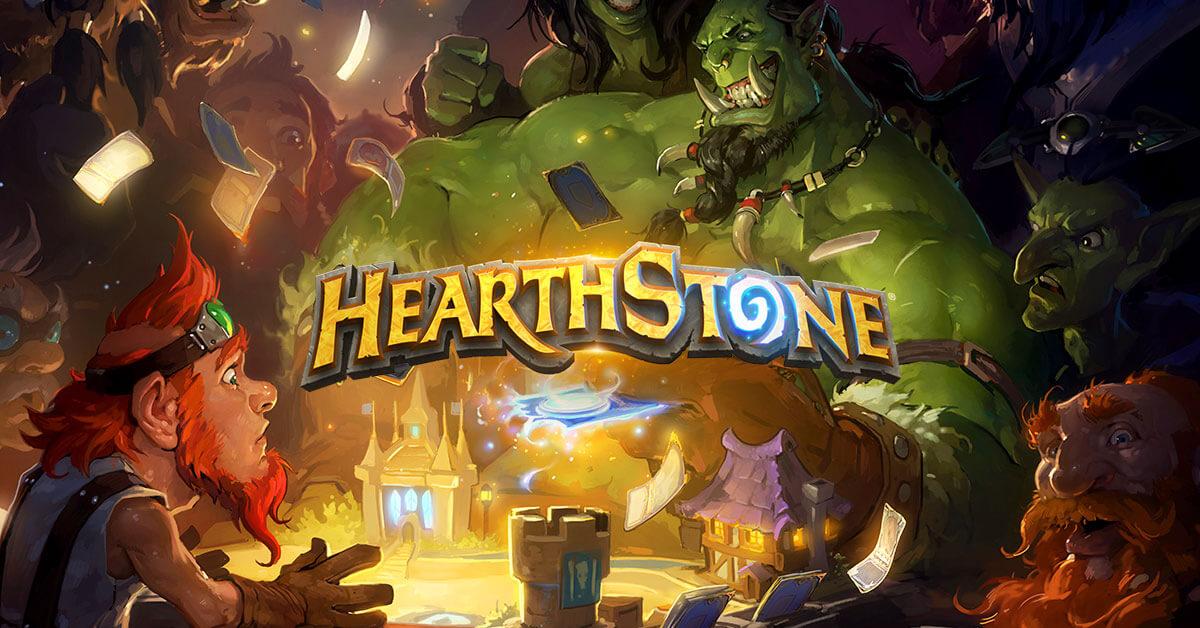Hearthstone is a free-to-play (read: has microtransactions) game for mobile and PC released in 2014 by Blizzard Entertainment. It’s a collectible card game that plays like a simplified version of Magic: the Gathering. The game is based on the world and characters of the Warcraft franchise. It’s aimed at a wide audience of players who like these types of games, which includes casual players and dedicated, tens-of-hours-per-week players alike. I have personally been playing the game on-and-off since 2016 and I’m quite fond of it.
In the original version of World of Warcraft, player characters could be one of nine character classes: mage, shaman, warrior, paladin, priest, hunter, warlock, rogue, and druid. Each character class played differently; warriors would wear heavy armor and get up close and personal with enemies while spellcaster classes would often cast powerful spells at enemies from afar, avoiding melee engagement. Hearthstone has these nine classes as well (and a recently added tenth class, demon hunter, added to World of Warcraft in the Legion expansion).
The main way Hearthstone is played is by constructing a 30-card deck from a set of cards available in the format you’re playing, then playing against other players and their decks. Deck building has some restrictions: you cannot have more than two copies of a non-legendary card in your deck, more than one copy of a legendary card in your deck, and you can only use neutral cards or cards corresponding to your chosen class. This last rule allows interesting balance decisions to be made by Blizzard and a variety of possible decks to play with and against. Since different classes choose from different card pools, however, if Blizzard isn’t careful, some classes can have significantly better cards available and suppress the presence of weaker classes in the metagame. This leads to a homogenous, sometimes tedious game experience, so Blizzard actively tries to implement balance changes to its cards to adjust. New cards are released several times a year (about 500 in a usual year nowadays), so this is an ongoing process. Class balance in Hearthstone is a poignant example of balance between strategies in a game, and giving different classes the tools to counter other classes is an example of balance in asymmetric games. Balance between game objects is important here too because the game variety suffers if certain cards are much stronger than the rest of them.
Class balance doesn’t always work out, though. Here’s one of my favorite Reddit memes complaining about a certain class being overpowered:
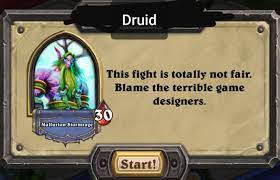
The Druid hero icon has been edited over the final boss of the game’s tutorial in the UI. The tutorial fight against Illidan Stormrage had this ‘blame the terrible game designers’ text as a joke. Who’s laughing now?
Another one of my favorite Hearthstone game balance anecdotes was from around the time of the Mean Streets of Gadgetzan expansion. I was in undergrad and riding on a bus to class with a friend. I was playing the famously overpowered Pirate Warrior deck of that era and talking about how powerful it was when another rider spoke up and said “players like you are why the game isn’t fun right now”. People really care about game balance!
In Hearthstone, different cards have different mana costs, which allows them to be balanced with a transitive relationship. Check out the following two cards for an example:
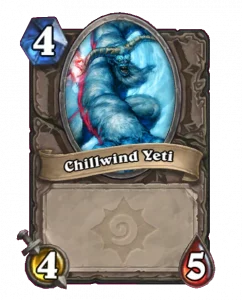
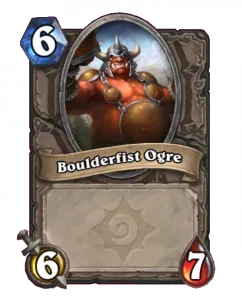
Boulderfist Ogre’s attack and health are objectively better than Chillwind Yeti’s, but the ogre costs more mana.
Of course, there are also ‘hate cards’ that counter other cards or strategies in an intransitive relationship:
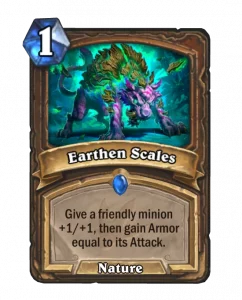
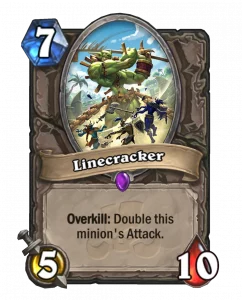

A deck using Linecracker’s ability to exponentially increase its attack is able to gain an exponential amount of armor with Earthen Scales. Platebreaker is a hard counter to the strategy, as it can destroy any amount of armor, even the ~2000 armor the Earthen Scales deck is consistently able to generate. The Earthen Scales deck was affectionately named ‘2000 armor Druid’ and I can attest to how much fun it is to play.
I have played a lot of Hearthstone over the years and even if I think constructed play is too expensive and repetitive to participate in any more, I still love other formats like Arena. Hearthstone has been influential on my tastes in video games and card games too, so I really recommend you give it a try. Before we wrap up, I’d like to include one more of my favorite memes from the community concerning game balance:
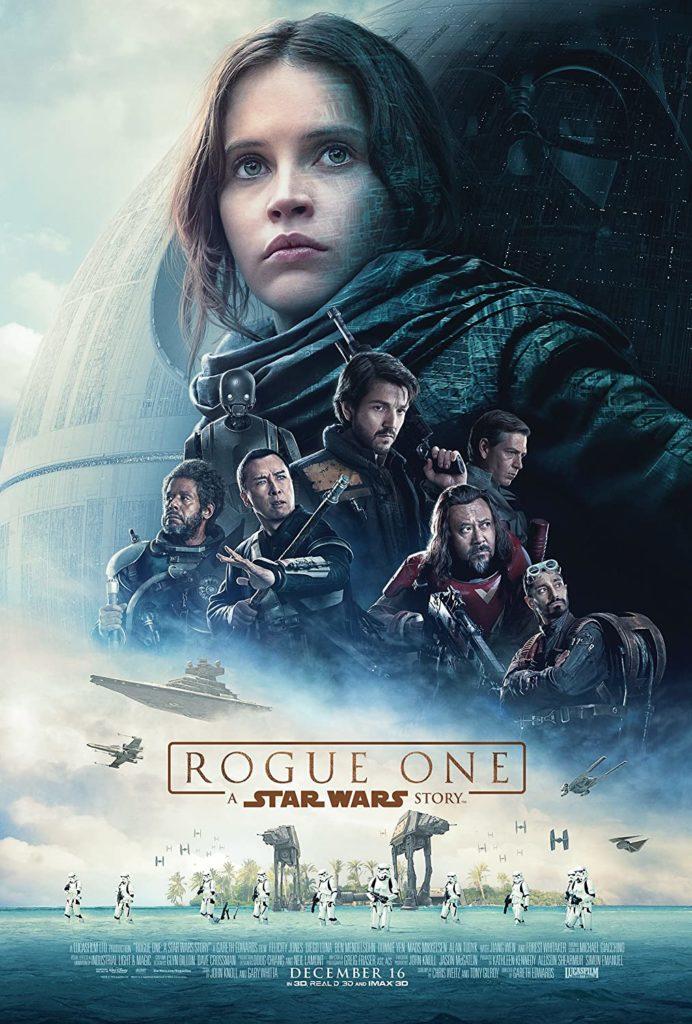
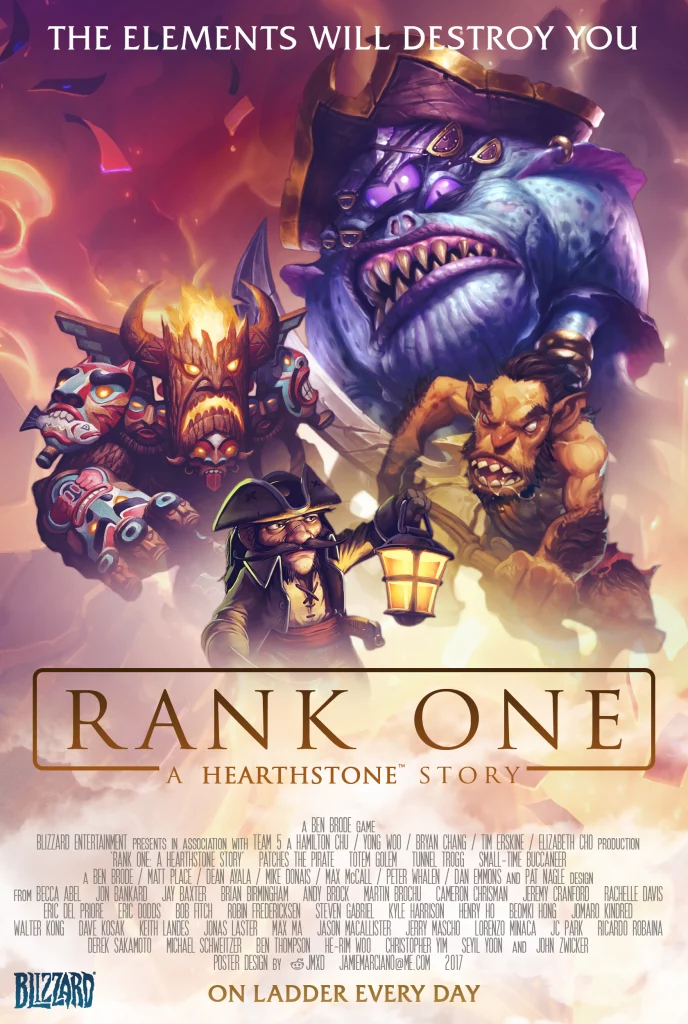
During the Mean Streets of Gadgetzan expansion, aggressive pirate decks and aggressive shaman decks were overtuned and ubiquitous on the ranked ladder (where ‘one’ is the second-best rank, requiring a lot of time, skill, and dedication to reach). Players complained about the pirate shaman deck constantly and created some hilarious memes about it. This was around the time the movie ‘Rogue One’ released and someone created this masterpiece of a meme. It features the powerful shaman and pirate cards Tunnel Trogg, Totem Golem, Small-Time Buccaneer, and the infamous Patches the Pirate. Some of these cards were powered down later by Blizzard, but the Trogg and the Golem were left alone (although the Golem’s impact was weakened with the nerf of Tuskarr Totemic).


